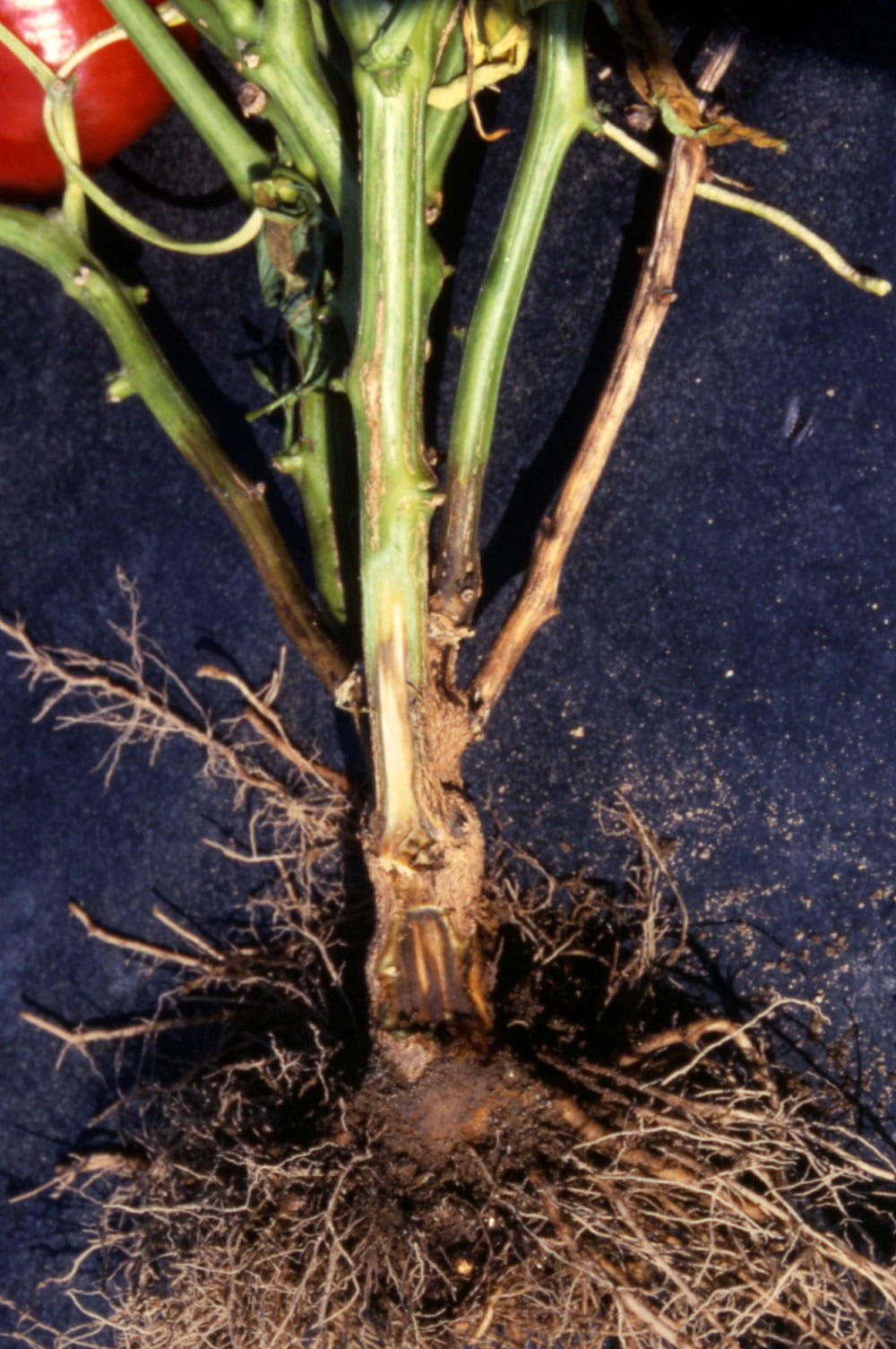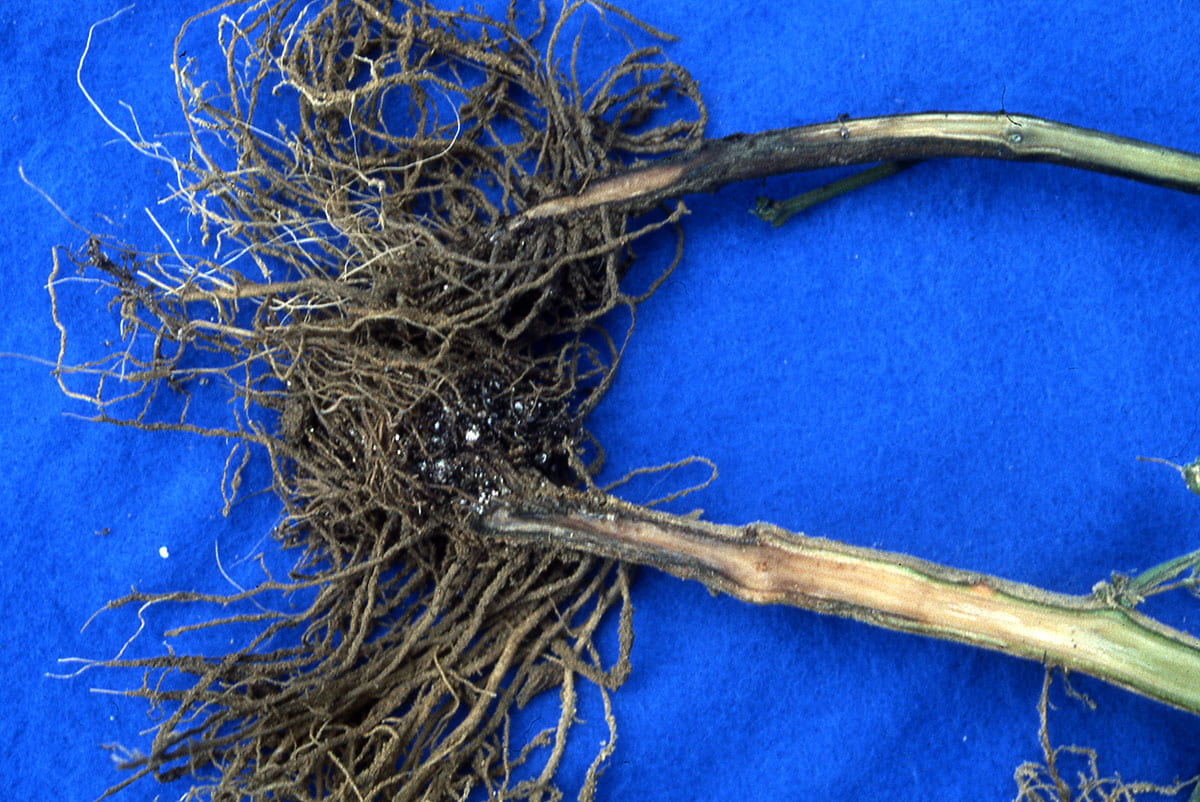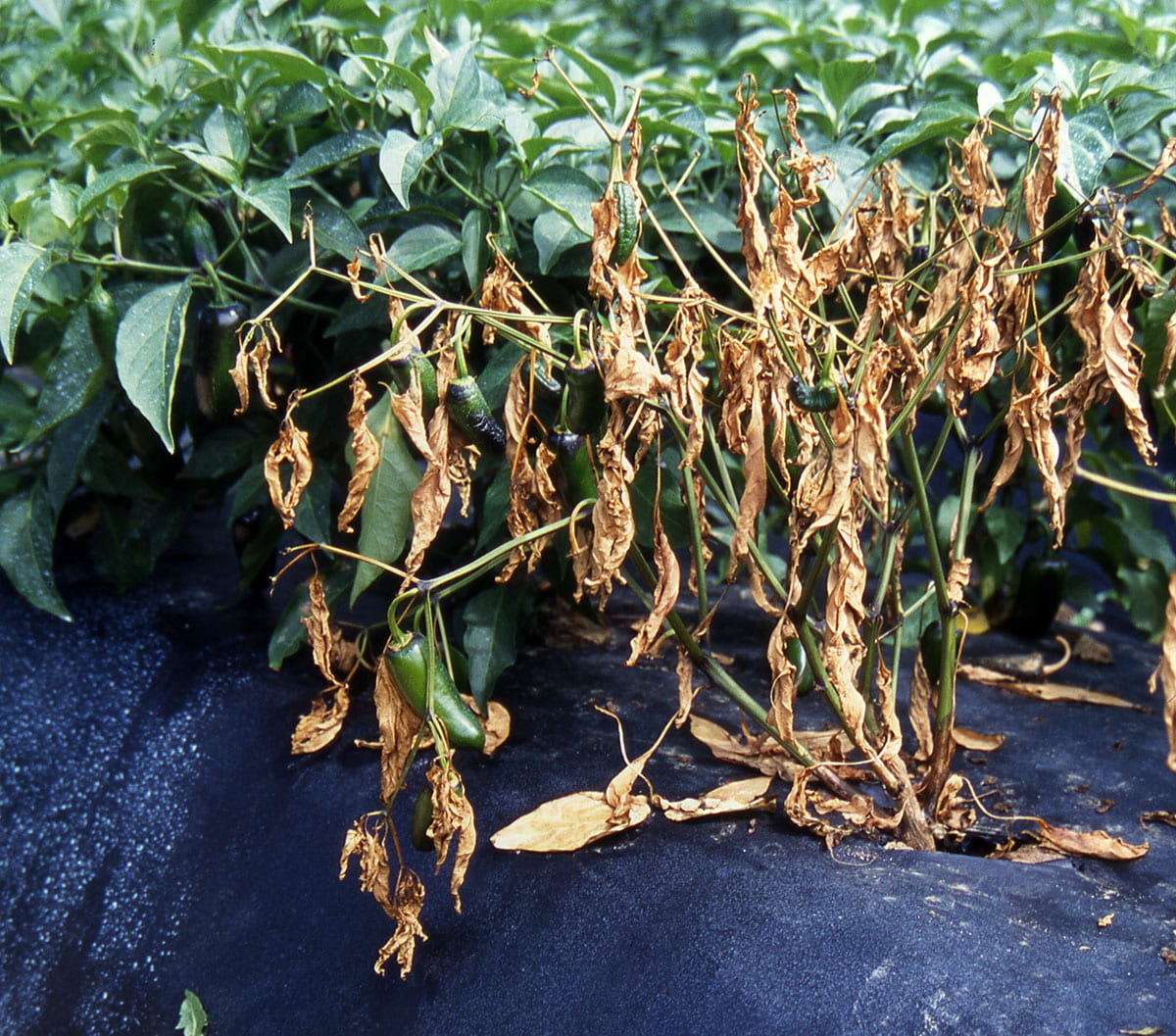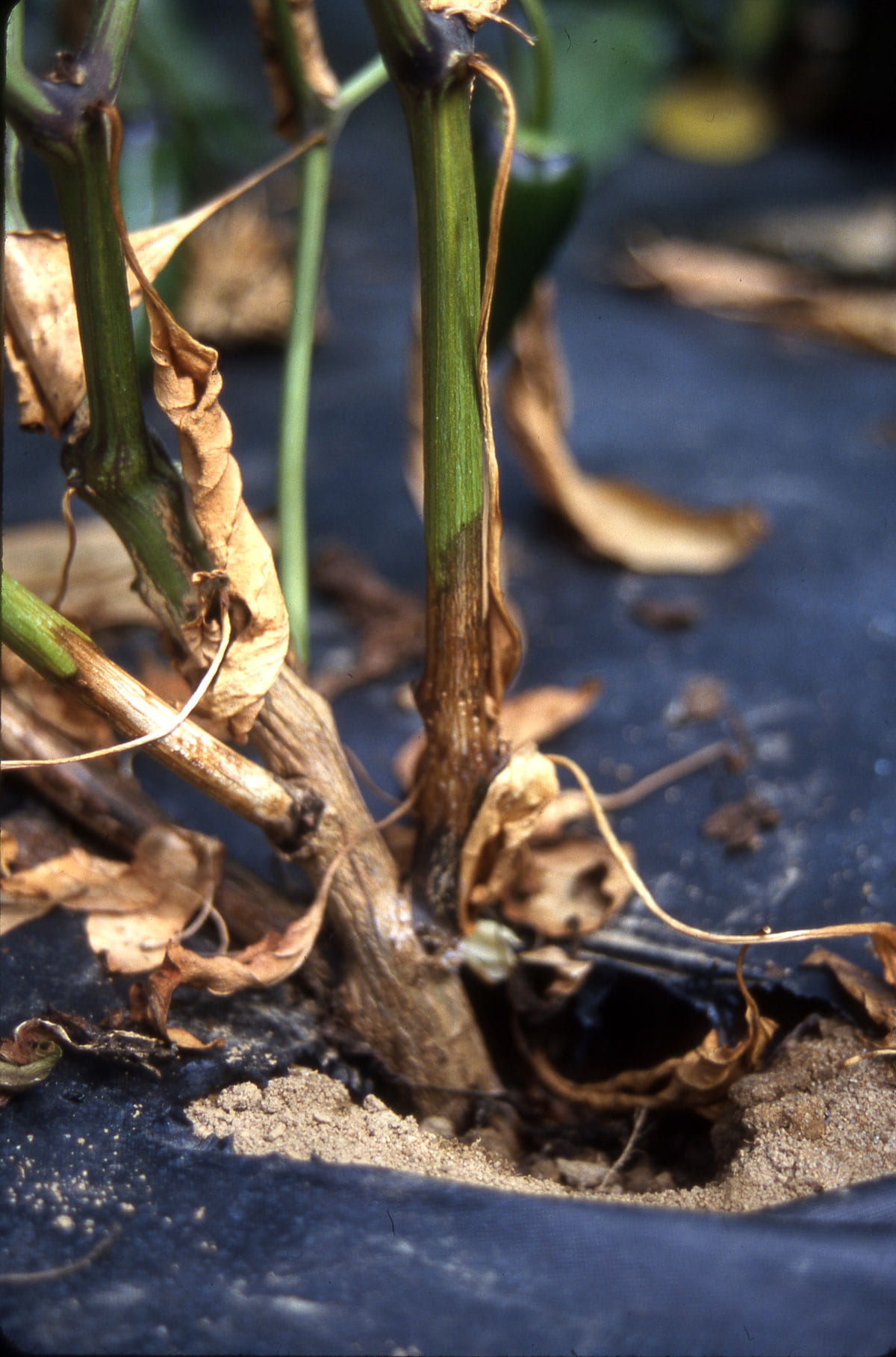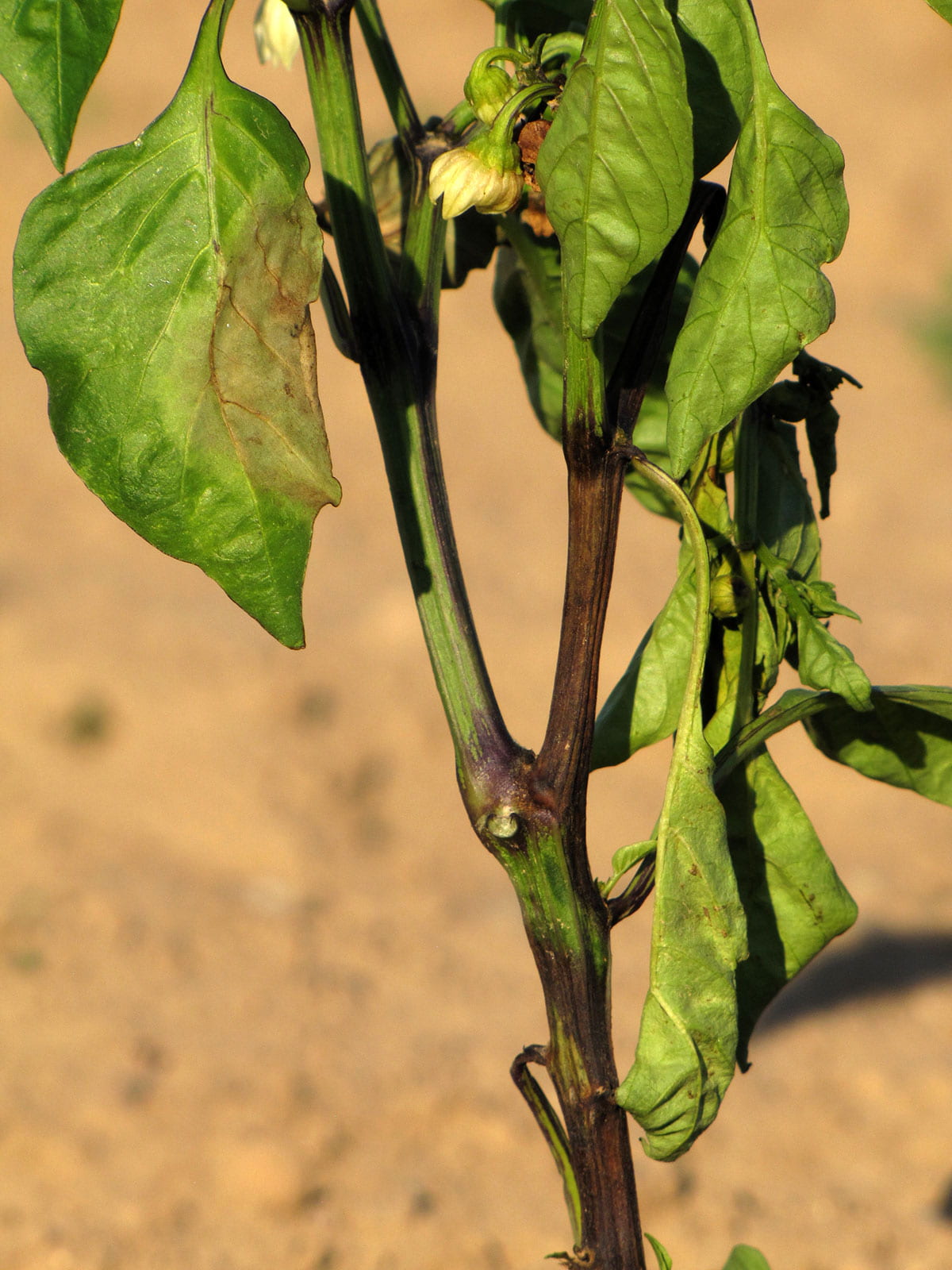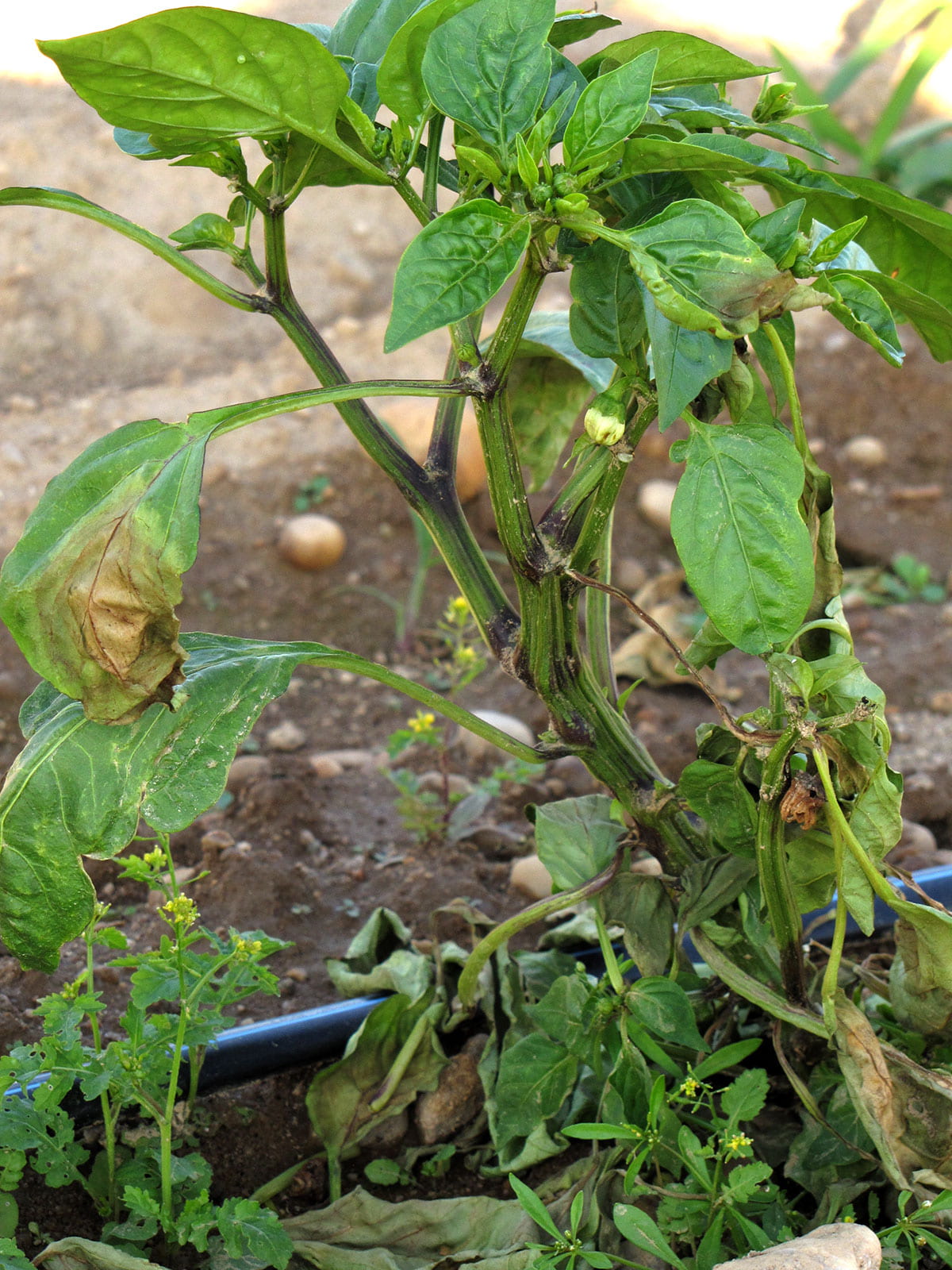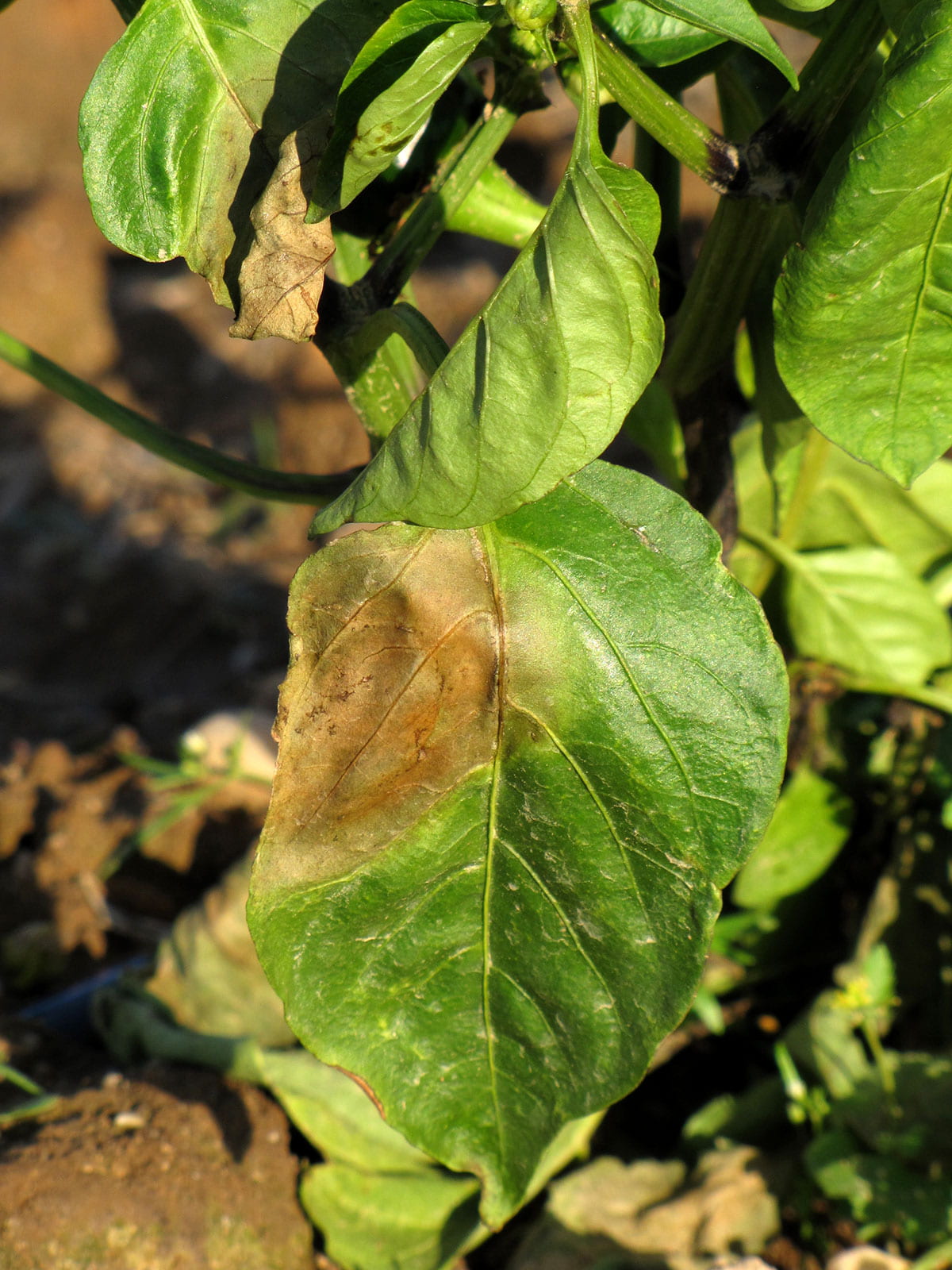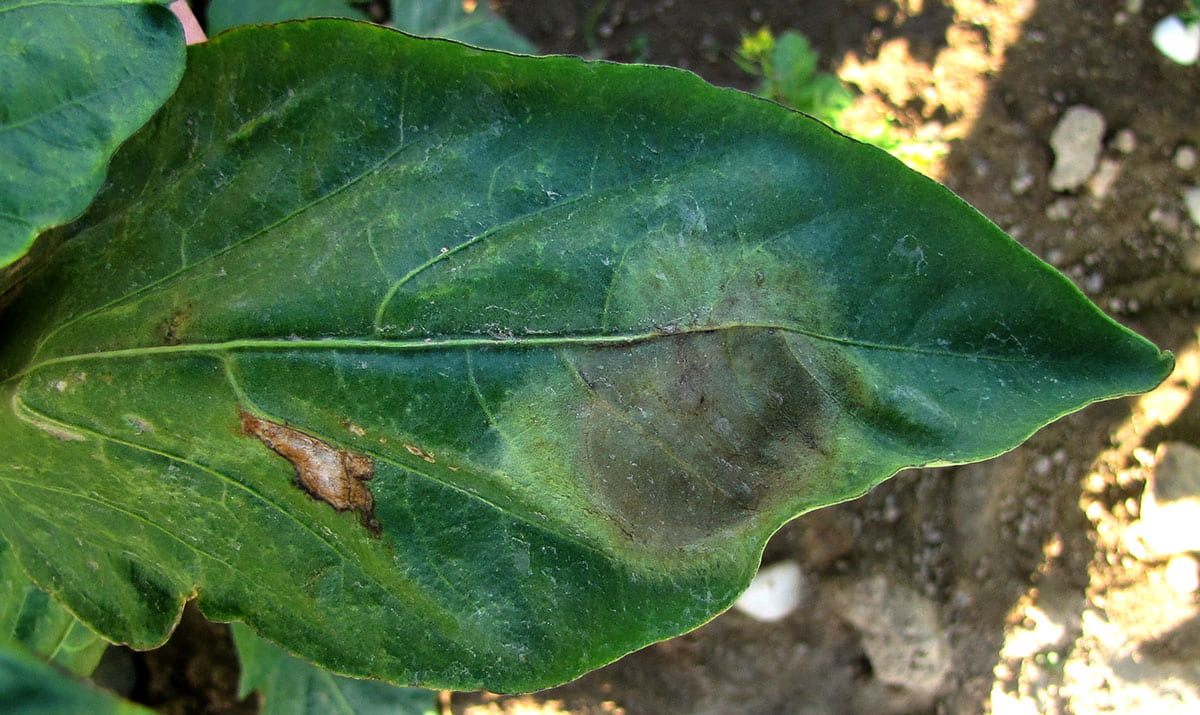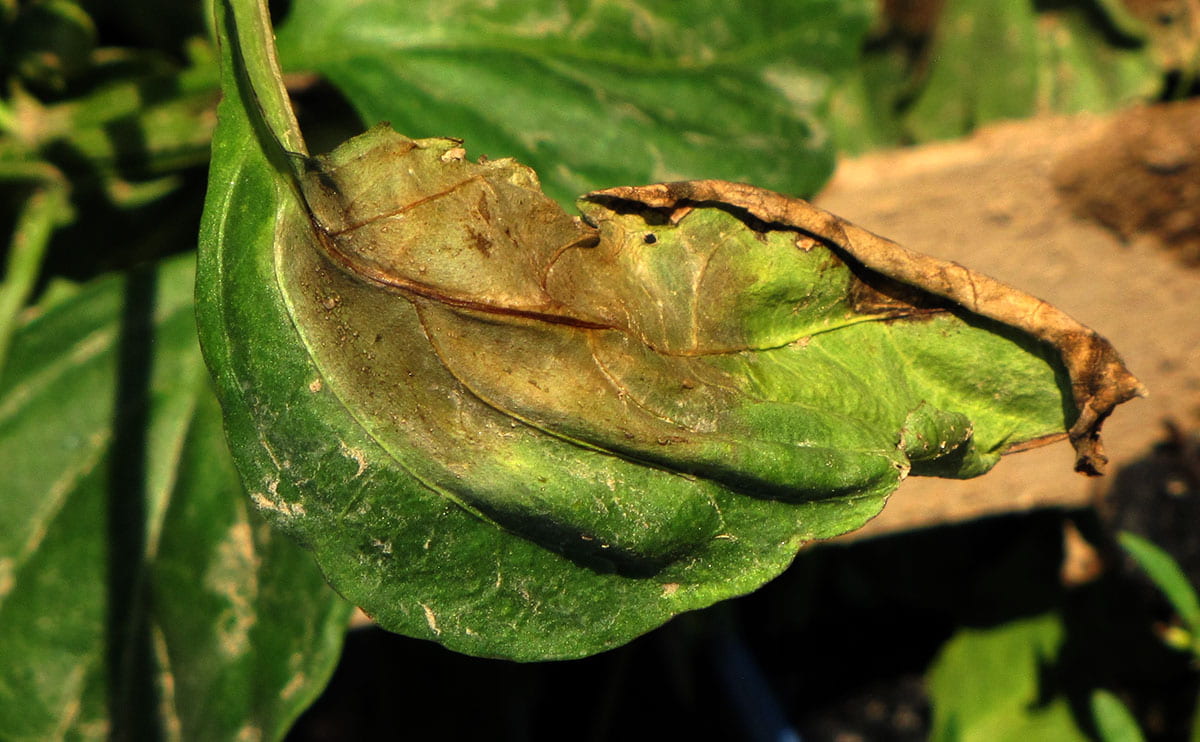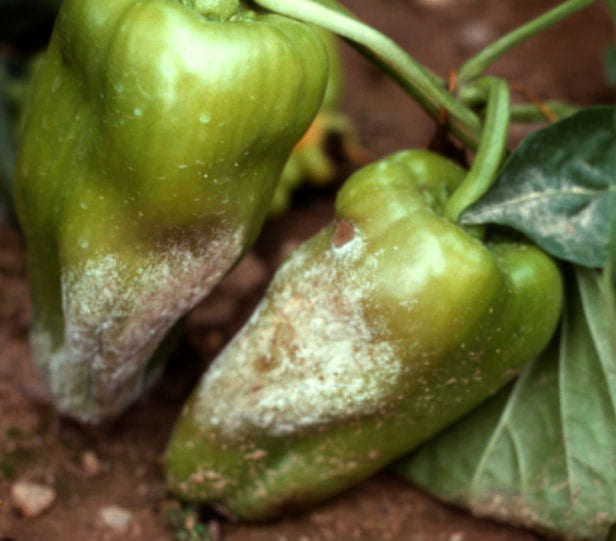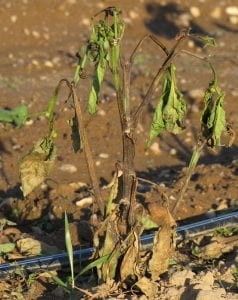 This disease is caused by a soil-borne pathogen. Soil saturated with water provides favorable conditions for disease development. Symptoms often develop first where water remained on the soil surface for several hours following rain. The pathogen moves in splashing water and water that runs across a field when it rains. Other plants susceptible to this pathogen include eggplant, tomato, beans (snap and lima), and all types of cucurbits. Pepper and cucurbits are most susceptible.
This disease is caused by a soil-borne pathogen. Soil saturated with water provides favorable conditions for disease development. Symptoms often develop first where water remained on the soil surface for several hours following rain. The pathogen moves in splashing water and water that runs across a field when it rains. Other plants susceptible to this pathogen include eggplant, tomato, beans (snap and lima), and all types of cucurbits. Pepper and cucurbits are most susceptible.
Management practices for Phytophthora blight include avoiding introducing the pathogen into a field, selecting resistant varieties, avoiding favorable conditions (soil saturated with water), applying fungicides starting before disease onset (preventive schedule), and promptly destroying affected plants at the start of an outbreak to limit spread. There are several conventional fungicides and biopesticides labeled for use on pepper in commercial production fields.
For much more information about this disease and its management, including currently labeled fungicides, see Phytophthora Blight and Its Management in Cucurbit Crops and Other Vegetables at the Cornell Vegetables website.
Please Note: The specific directions on pesticide labels must be adhered to — they supersede these recommendations, if there is a conflict. Any reference to commercial products, trade or brand names is for information only; no endorsement is intended.
Crown rot phase. Affected stems are dark brown to black on the outside of the crown tissue of the main stem, starting at the soil line. They are also discolored inside. With young plants affected tissue may look water-soaked and be soft.
Root rot is another symptom of Phytophthora blight.
Raised beds are a recommended management practice because water drains faster through the soil in these beds than in flat culture. With this plant, not enough soil was put around the stem during planting, resulting in a hole in the soil forming around the stem, which enabled water to pool around the stem creating ideal conditions for development of Phytophthora blight.
Stem lesions also develop on upper stems. Affected tissue is dark brown and typically encompasses a large section of a stem in contrast with the normal purplish-brown coloration that occurs at leaf nodes in many varieties. See the 2 images that follow. The plant in the second image has a stem lesion on the low branch near the soil and several affected leaves. The purplish discoloration on this plant’s stems is normal.
Leaf spots develop when water splashes the pathogen (Phytophthora capsici) up on leaves. The spots typically are large, dark brown, and sometimes have a wilted border; thus they resemble those caused by a related pathogen (Phytophthora infestans) which causes late blight.
The causal pathogen, Phytophthora capsici, does not produce its spores (sporangia) on leaf spots, in contrast with Phytophthora infestans, which causes late blight and produces an abundance of wind-dispersed sporangia enabling it to easily spread among plantings potentially long distances. No spores were found on the leaf spots pictured below after they incubated for a day on wet paper towel in a closed plastic bag. The spots enlarged considerably during this time.
Fruit rot occurs when fruit are in contact with soil containing the pathogen or the pathogen is splashed by water on to the fruit. The white, yeast-like growth is thousand of spores that will be dispersed by splashing water during rain or irrigation. The pathogen readily produces a lot of spores on fruit, few spores develop on other plant parts.




